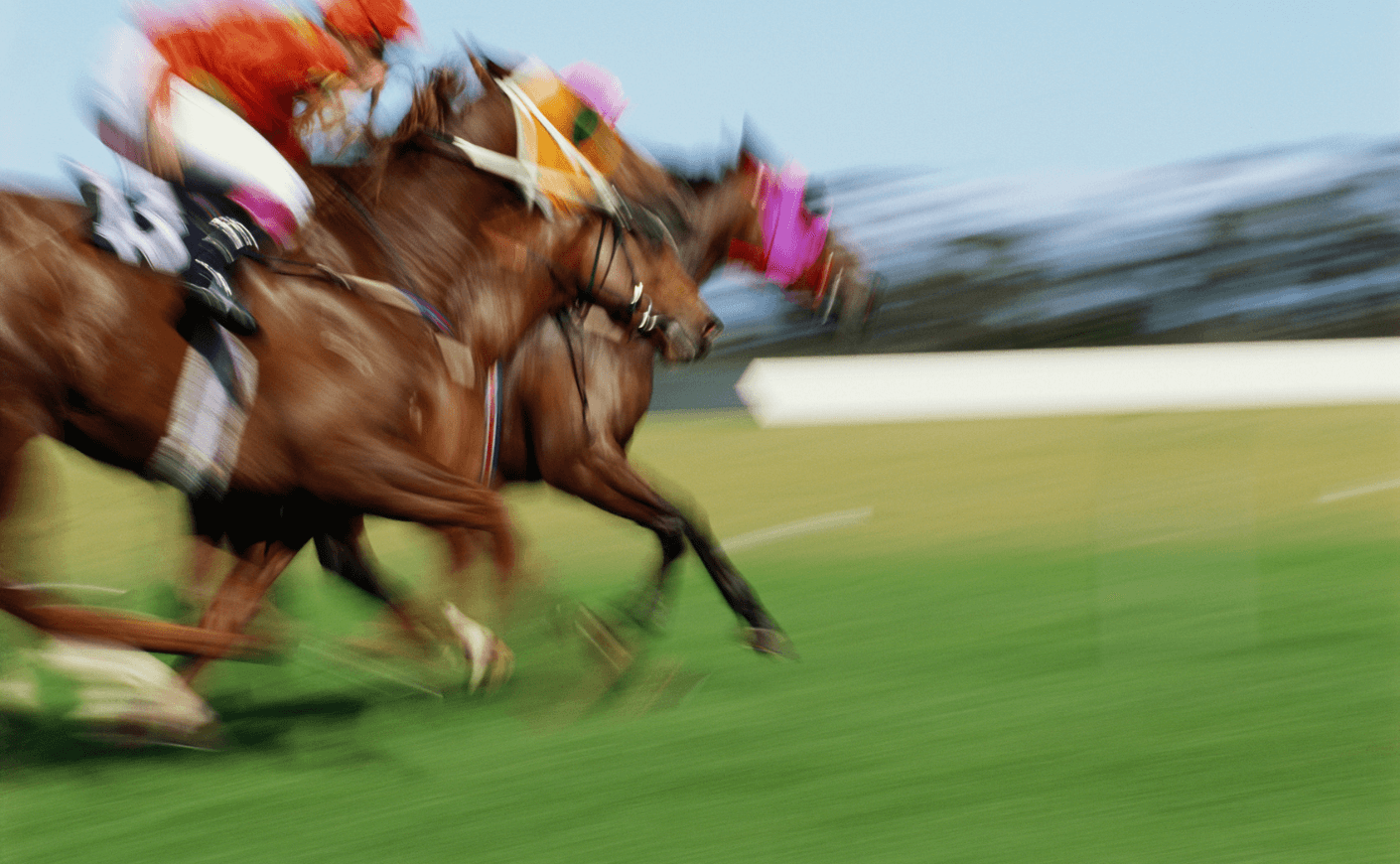When many of us think of horse racing, we recall fond memories. During childhood visits to the track, we were dazzled by the sheer size of the powerful animals — and equally entranced by the hot dogs and soda sold at the concessions stand. As adults, many of us have taken a turn at betting, too — and some of us have even won big. But the bad news is that this carefree stadium atmosphere isn’t cultivated around a sport played by consenting, well-compensated human beings. Instead, says one expert, the “players” are animals who are easily — and often — abused.
Patrick Battuello, founder and president of the nonprofit Horseracing Wrongs, penned the following essay about the systemic issues behind horse racing. Before you make your next trip to the race track, read this.
Through the force of brilliant marketing, we Americans are conditioned from birth to view horse racing as just another sport — “The Sport of Kings.” And there’s no clearer manifestation of this than the currently unfolding Triple Crown “season,” when racehorses are celebrated as “competitors” and the winners are dubbed “champions.” But beneath this well-crafted facade lurks a sinister core, where cruelty reigns, and death is a constant companion.
That at least some racehorses die at the track is certainly not news. But prior to Horseracing Wrongs, no one knew how many. Through FOIA requests to state racing commissions, we have documented — with names, dates, locations, and details — almost 10,000 racehorse kills since 2014. Our research, however, indicates that more than 2,000 horses die at U.S. tracks every year — that’s about six every single day.
And to be clear, death at the track is neither clean nor tranquil. Death at the track is cardiovascular collapse, or a failed heart — this happening, mind you, to animals who are mostly under the age of six. Death at the track is pulmonary hemorrhage, or bleeding out from the lungs. Death at the track is blunt-force head trauma from collisions with other horses or the track itself. Death at the track is broken necks, severed spines, ruptured ligaments, and shattered legs — occasionally shattered so severely that the limb remains attached to the rest of the body by skin or tendons only.
Death at the track is also things like: Colic, a painful, terrifying abdominal affliction; laminitis, excruciating inflammation in the feet; respiratory infections; neurological disorders; parasitic infestations; and the proverbial “barn accidents.” Sometimes, FOIA documents simply read that horses are “found dead in the morning” — with no other explanation.
Then, too, there’s slaughter: Two independent studies (as well as industry admissions) reveal that most — multiple thousands annually — “spent” or simply unwanted racehorses are mercilessly bled-out and butchered at their “career’s” end. From “athlete” to meat, in a matter of days.
But death is only part of the horse racing story. There’s also the everyday abuse: Would-be racehorses are forever torn from their mothers and herds as mere babies. They’re sold, usually at the tender age of one, and then broken, an industry term meaning to be made pliant and submissive. Alone and terrified, their servitude begins.
A horse doesn’t reach full musculoskeletal maturity till the age of six. But racehorses are typically thrust into intensive training at 18 months, and raced at two. (On the maturation chart, a 2-year-old horse is the rough equivalent of a 6-year-old child.) In the necropsies, we see time and again 4-, 3-, and even 2-year-old horses dying with chronic conditions like osteoarthritis and degenerative joint disease — clear evidence of the incessant shocks these pubescent and adolescent bodies are forced to absorb.
As a rule, racehorses are kept locked, alone, in tiny 12×12 stalls for over 23 hours a day, making a mockery of the industry claim that “horses are born to run, love to run,” and a cruelty all the worse for being inflicted on innately social animals like horses. Prominent equine veterinarian Dr. Kraig Kulikowski likens this practice to keeping a child locked in a 4×4 closet for over 23 hours a day. Relatedly, practically all the horse’s natural instincts and desires are thwarted, creating an emotional and mental suffering made clear by the stereotypies commonly displayed by confined racehorses: Cribbing, windsucking, bobbing, weaving, pacing, kicking, even self-mutilation.
Those in the racing business effect control over the horses through force and intimidation: Pushing, shoving, pulling, yanking, yelling, screaming. And also through the tools of the trade: cribbing collars, nose chains, lip chains, tongue ties, eye blinders, and mouth “bits” — which, says Dr. Robert Cook, an expert on equine physiology, make the horses feel like they’re suffocating when being forced to run at breakneck speeds. As for the whip, consider this: The public flogging administered to racehorses would land a person in jail if done to his dog in the park. But at the track, it’s simply part of the tradition.
By law, racehorses are chattel – pieces of property to be bought, sold, traded, and dumped whenever and however their people decide. In fact, the average racehorse will change hands multiple times over the course of his “career.” This near-constant shuffling among trainers, grooms, vets, barns, tracks, and states is a primary reason why some 90 percent of active racehorses suffer from chronic ulcers. To make matters worse, racehorses are not even afforded the protections of animal-cruelty statutes, meaning an owner or trainer can run his horse into the ground — yes, even to death — with virtual impunity.
Heartrending separation. Spirit-crushing confinement and isolation. The grinding of unformed bodies. Subjugation. Suffering. Death. A “sport”? If it weren’t for the gravity involved, it’d be absurd. Horse racing is nothing but exploitation of a weaker species for among the most shameful of reasons: $2 bets and frivolous entertainment. We live in 21st-Century America; we can, we should — we must — be better than this. End the cruelty. End the killing. End horse racing.









